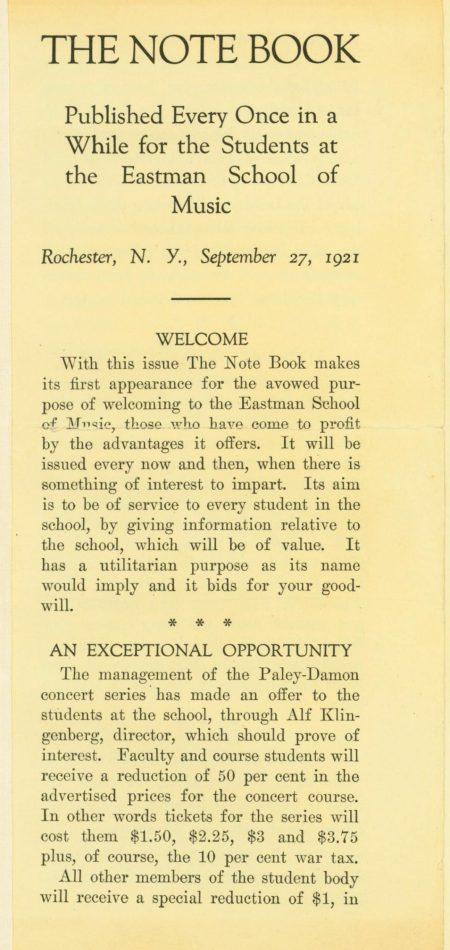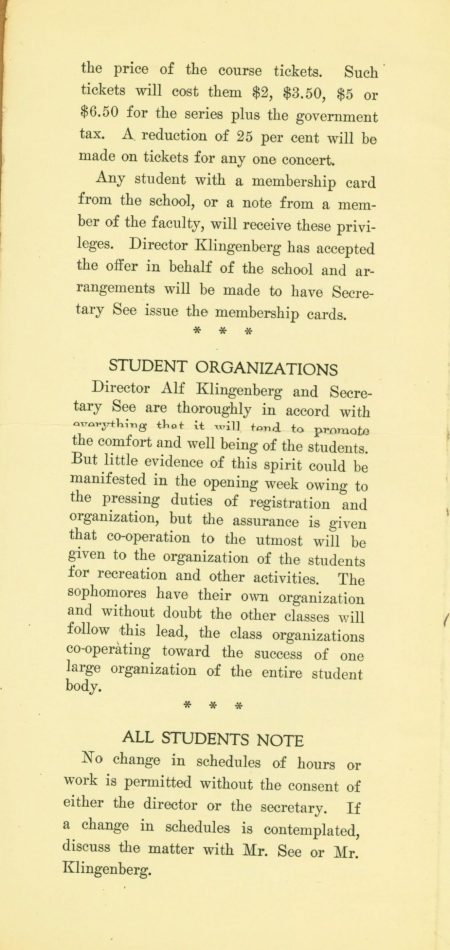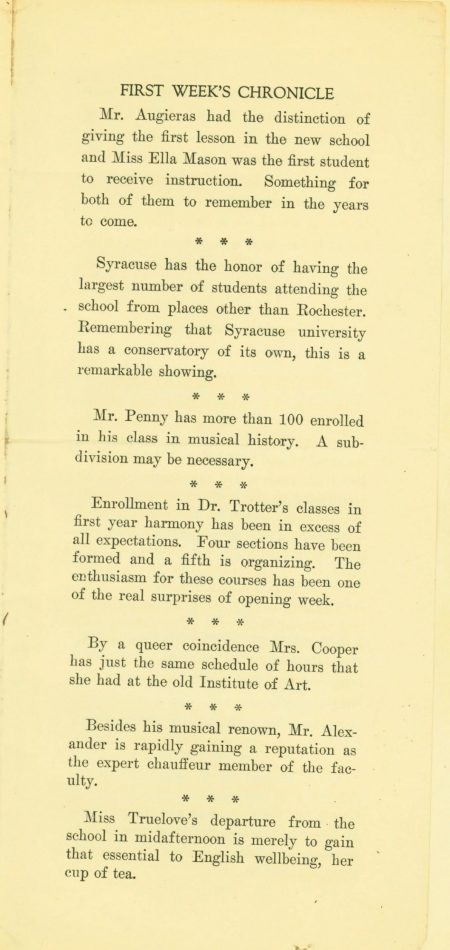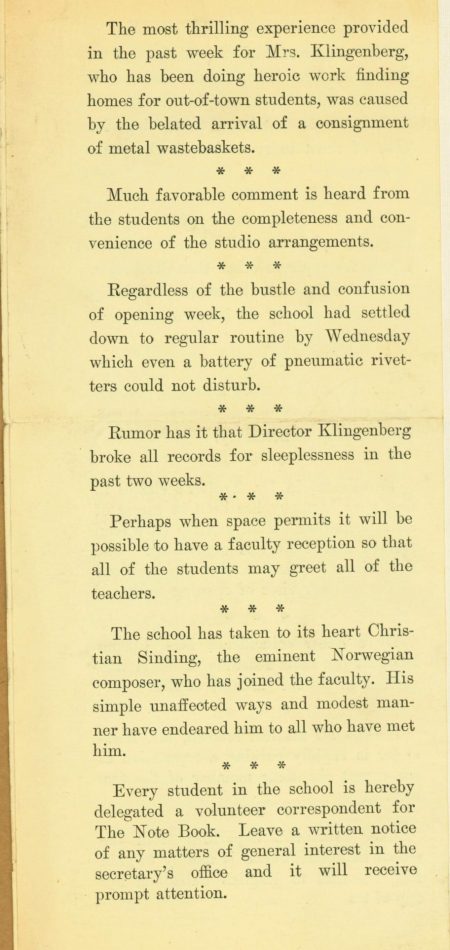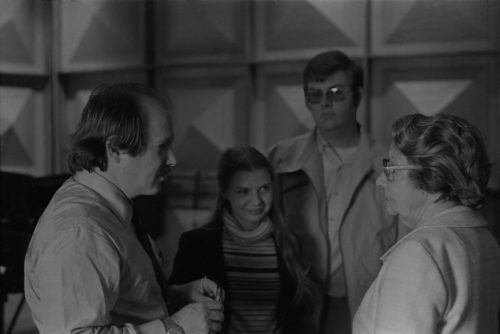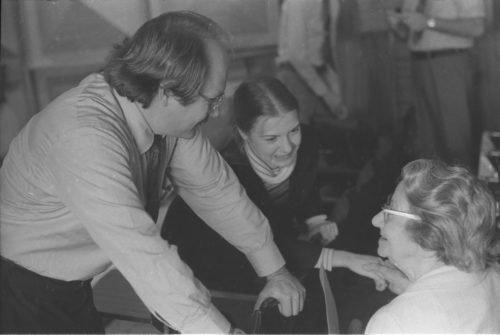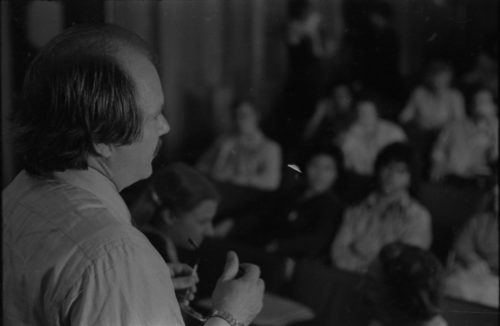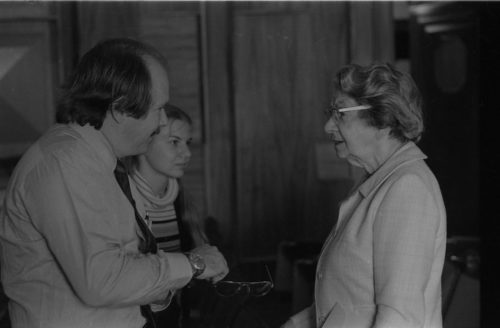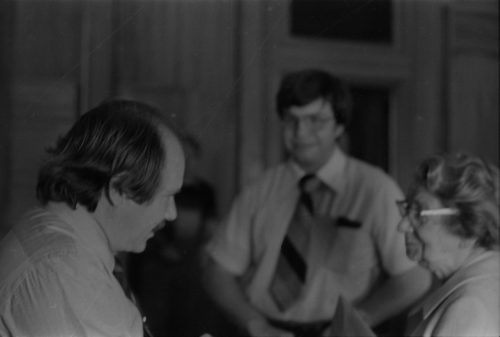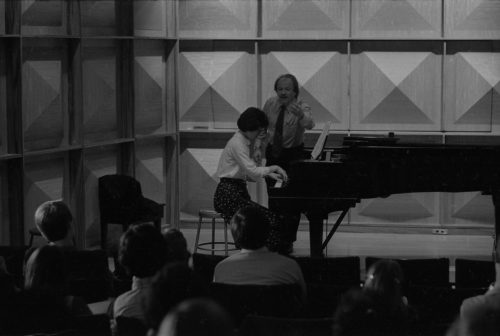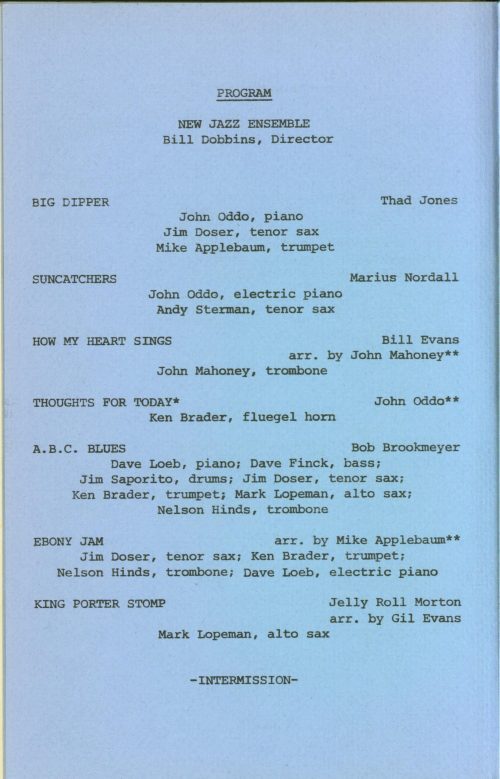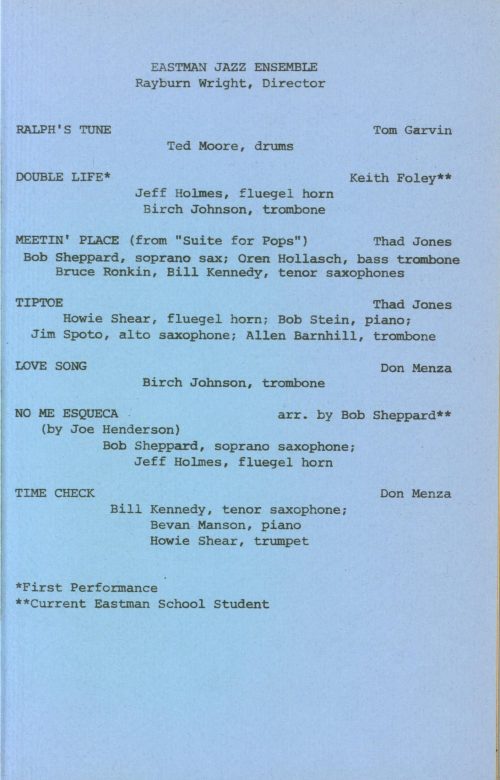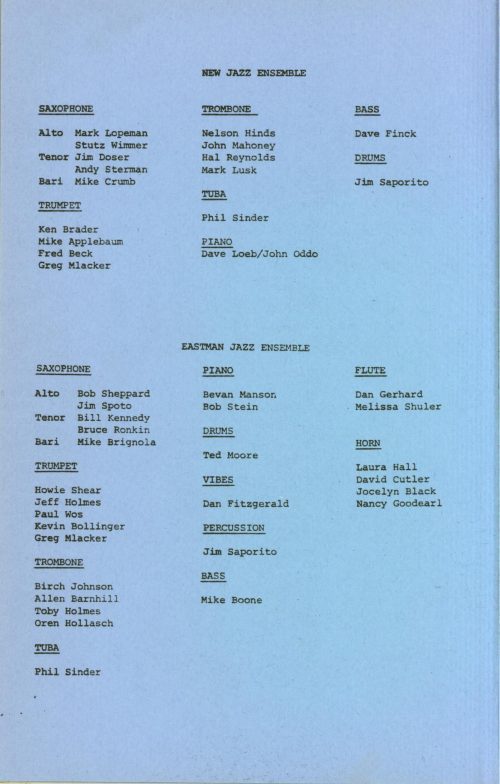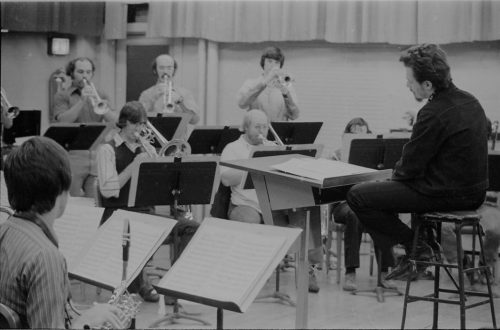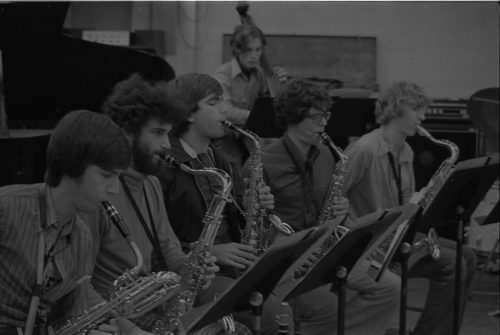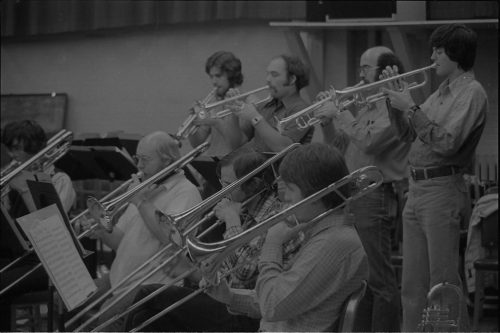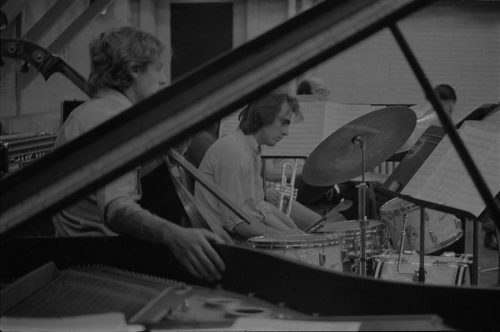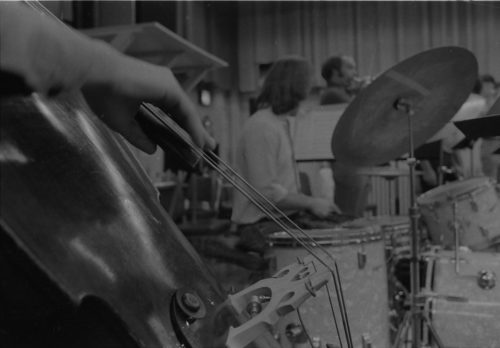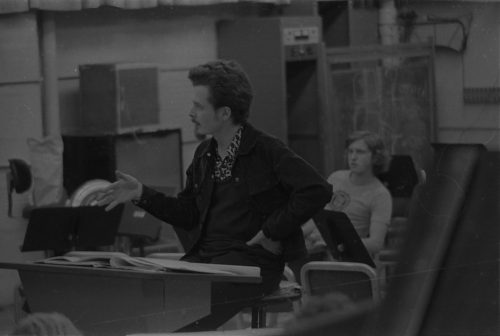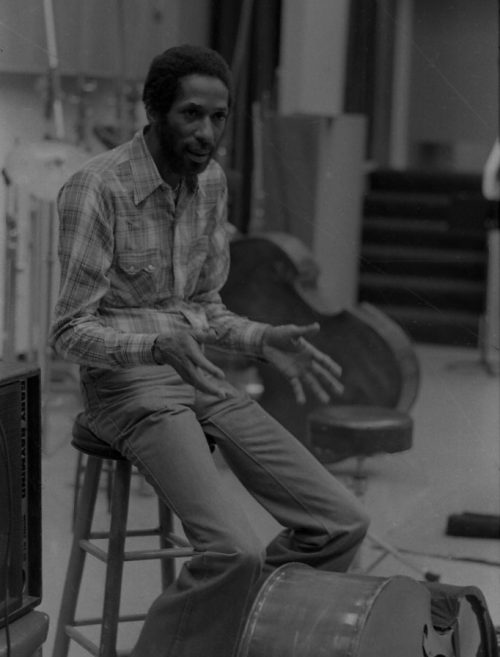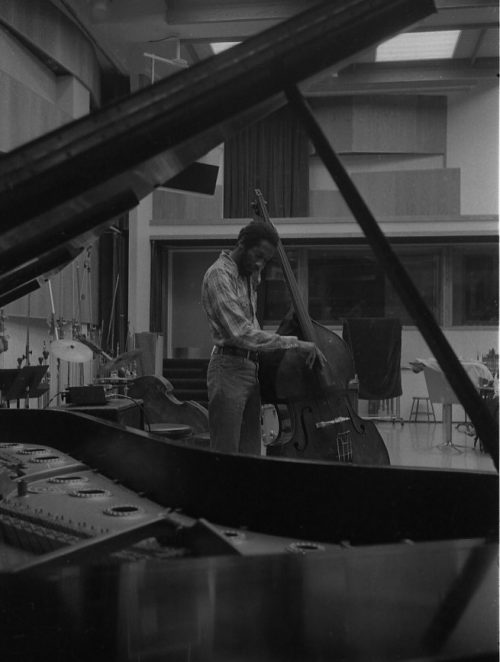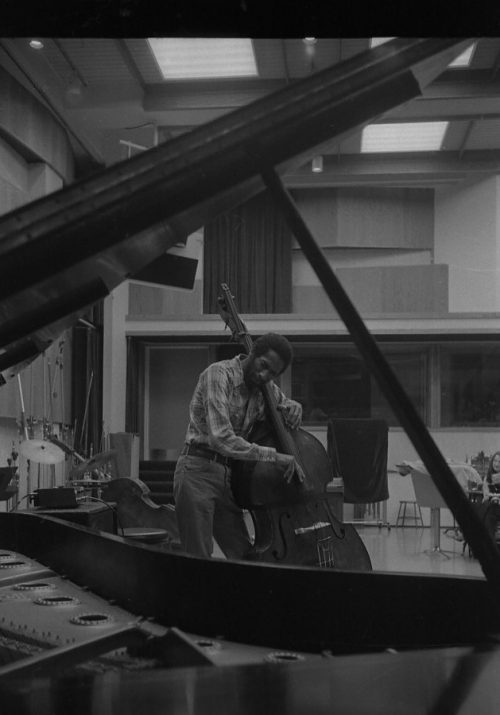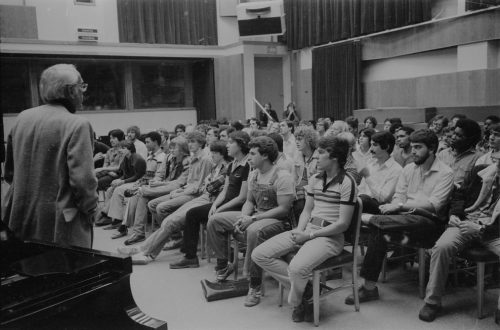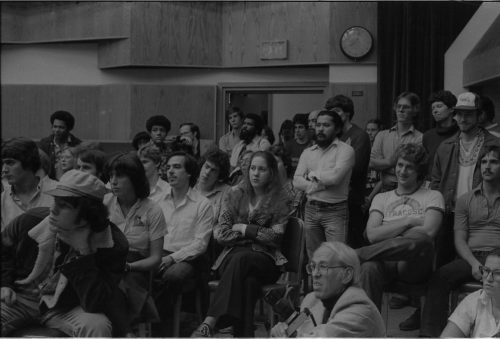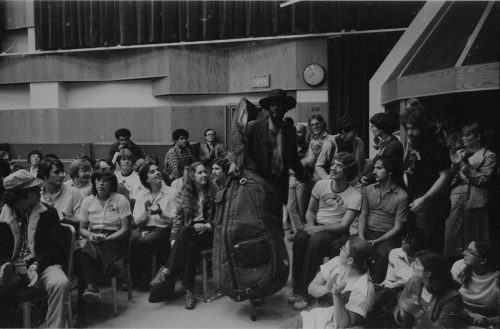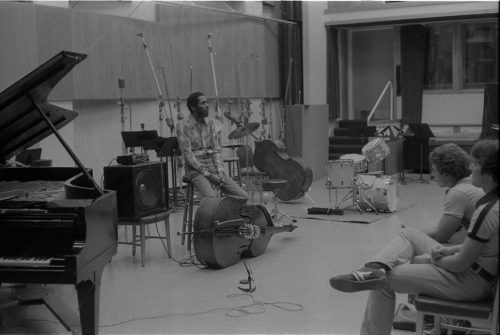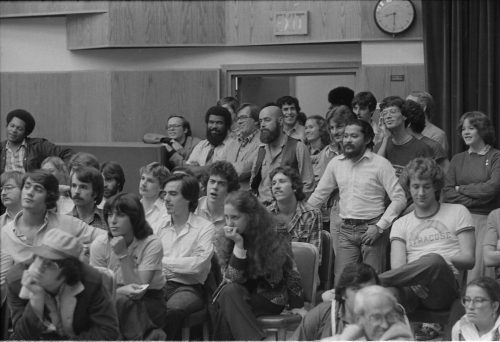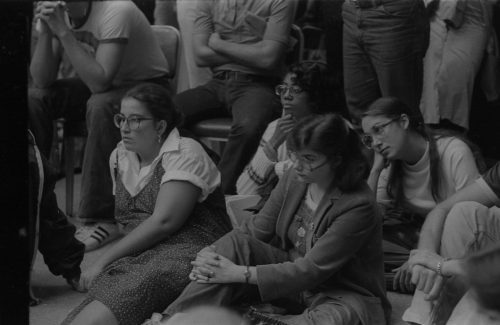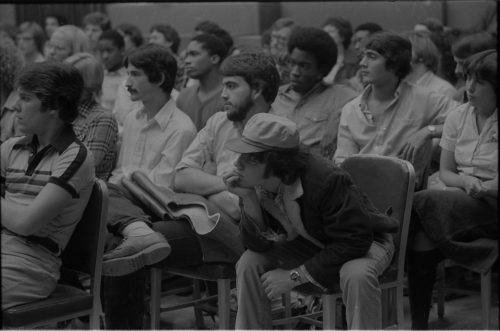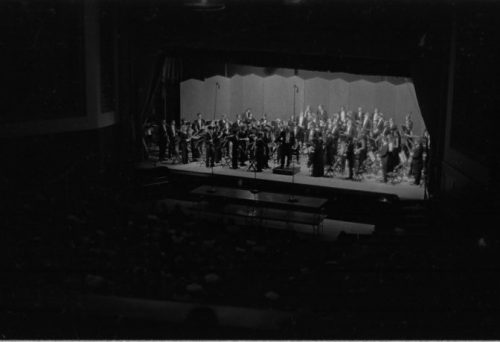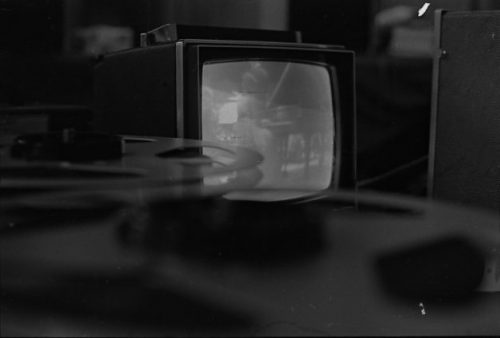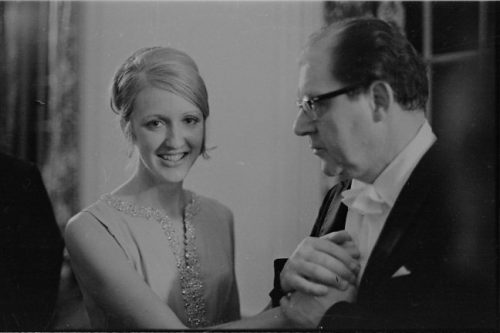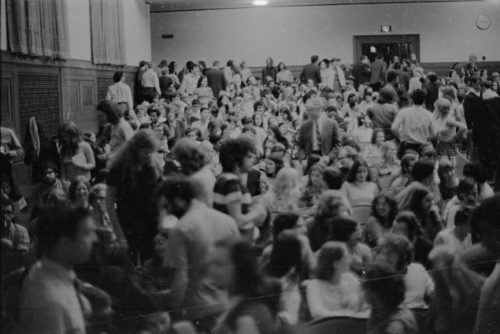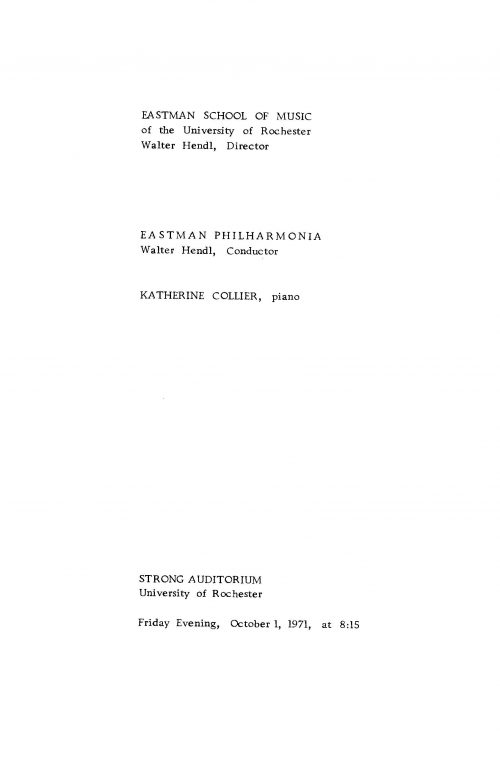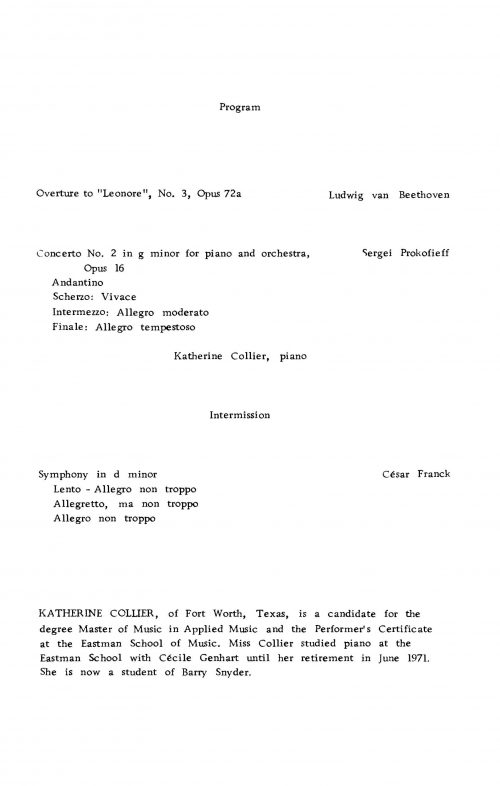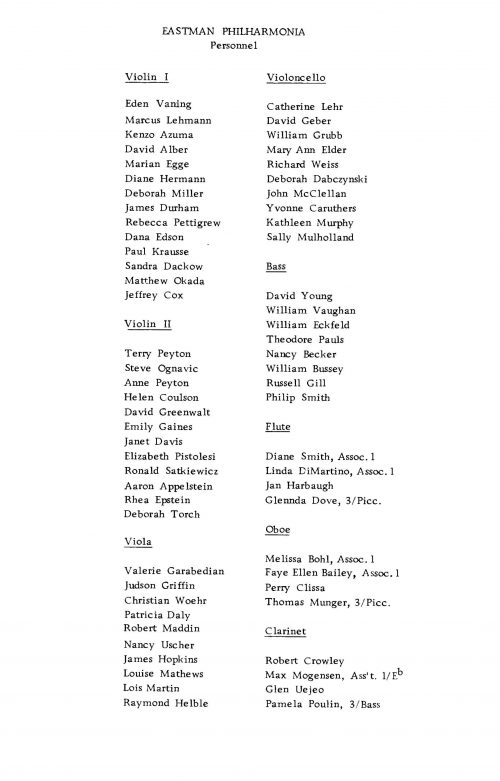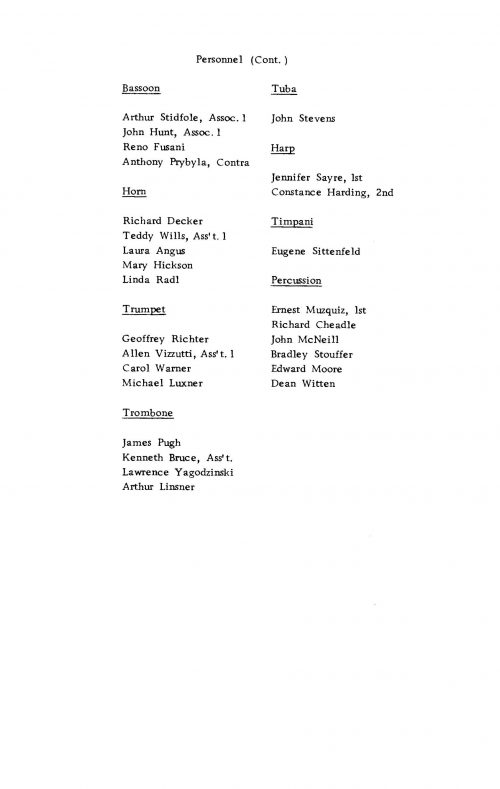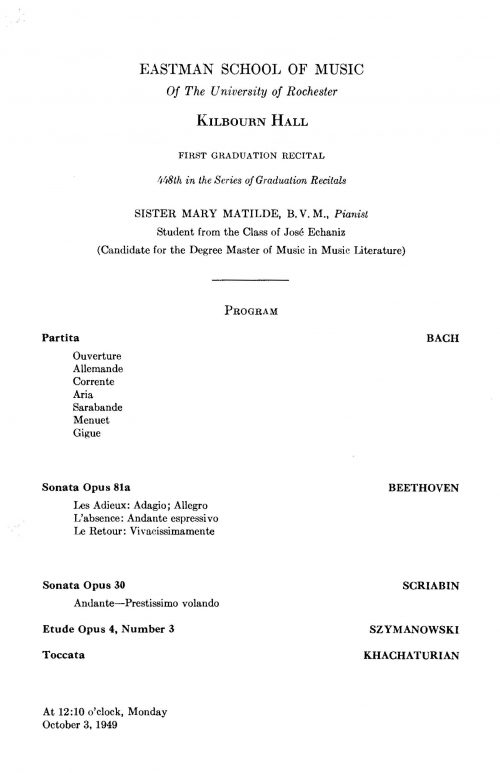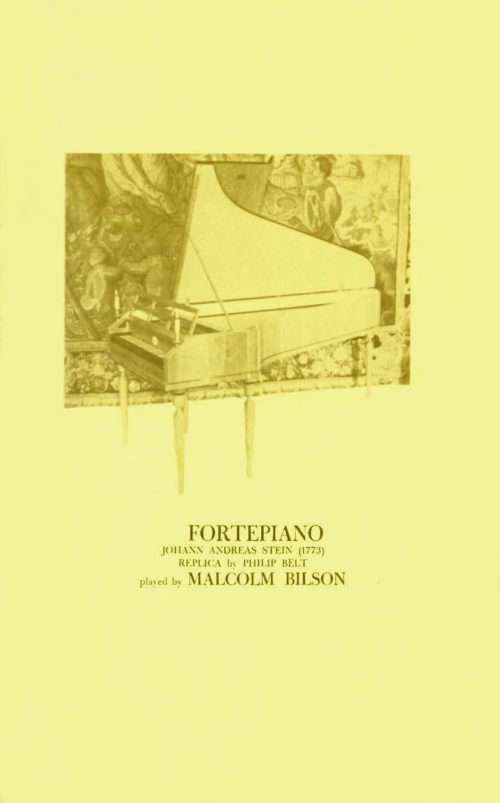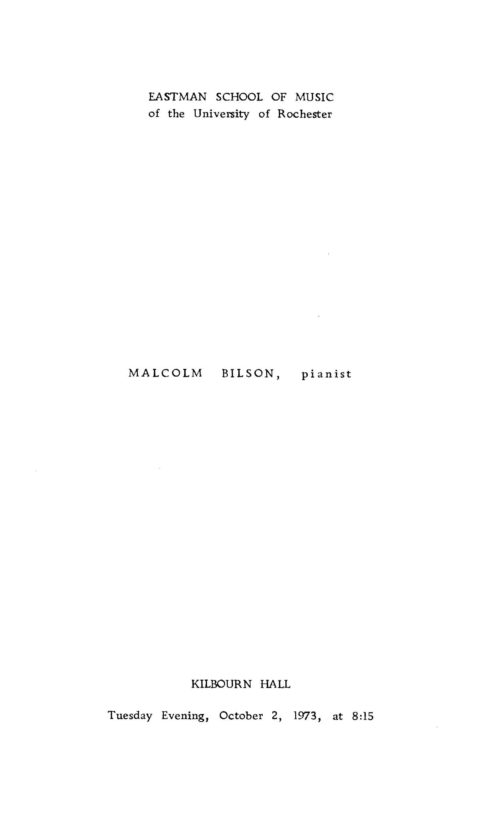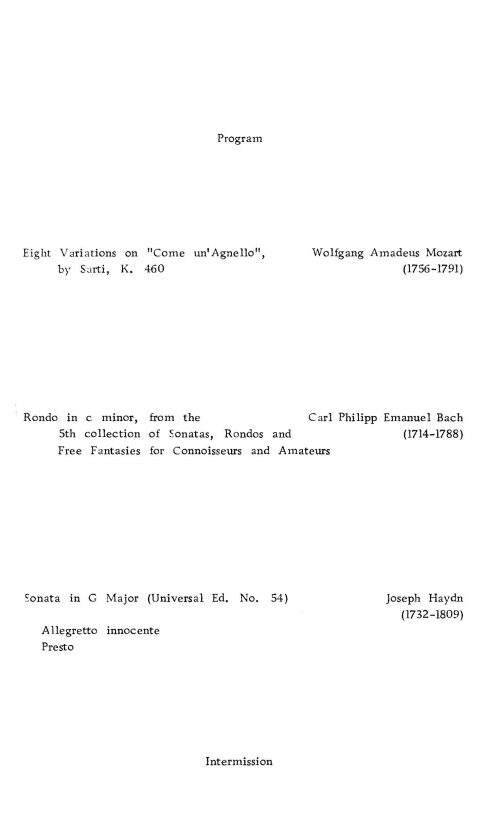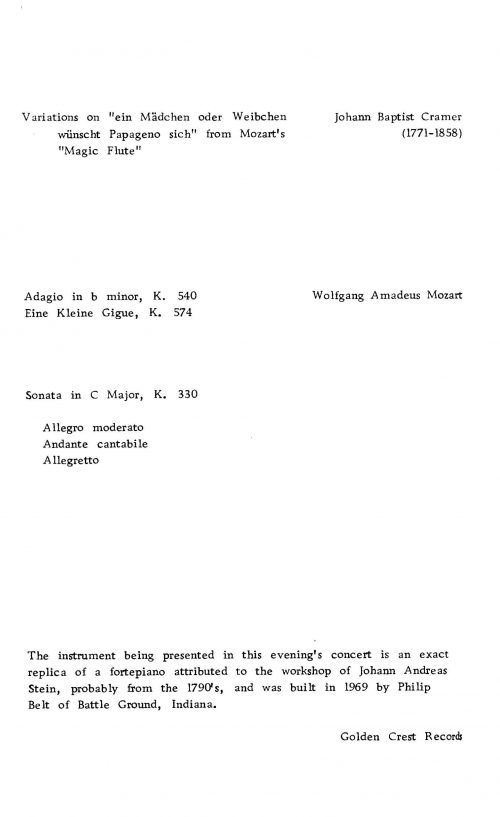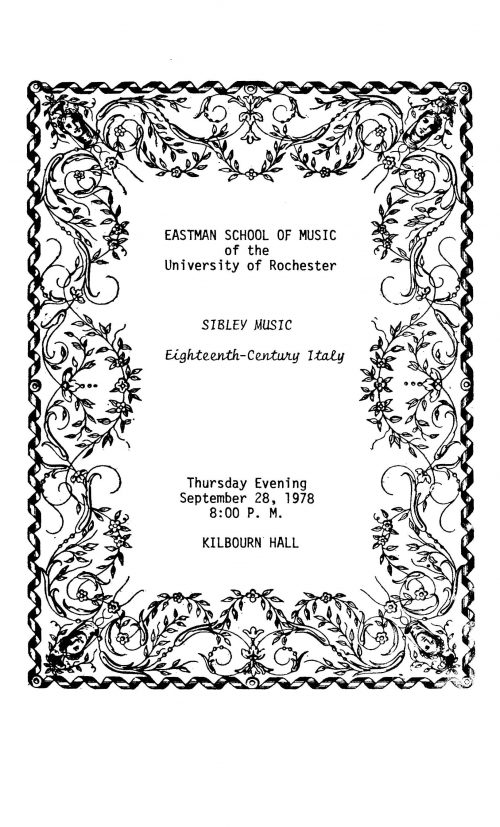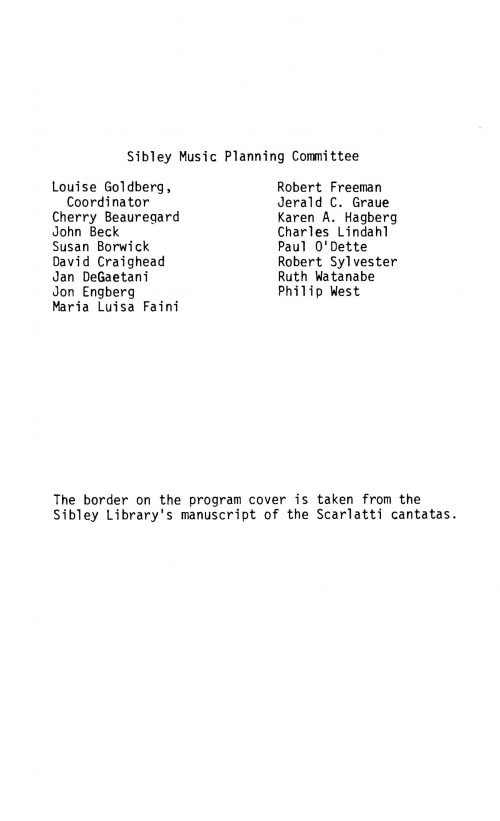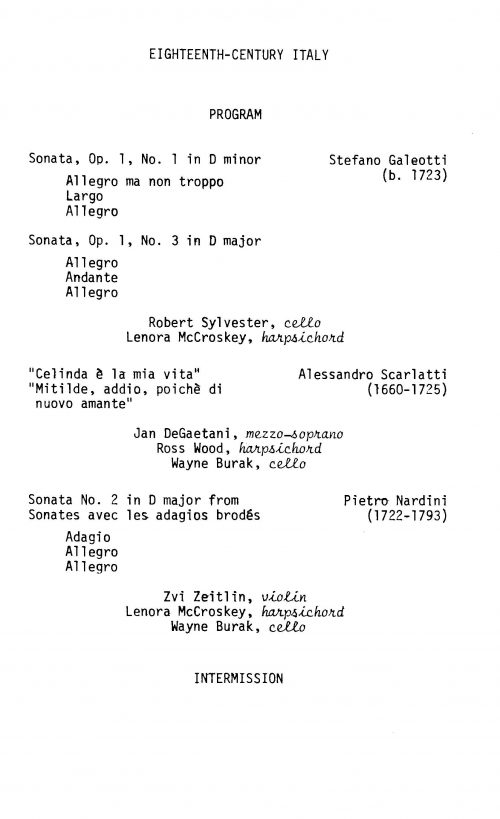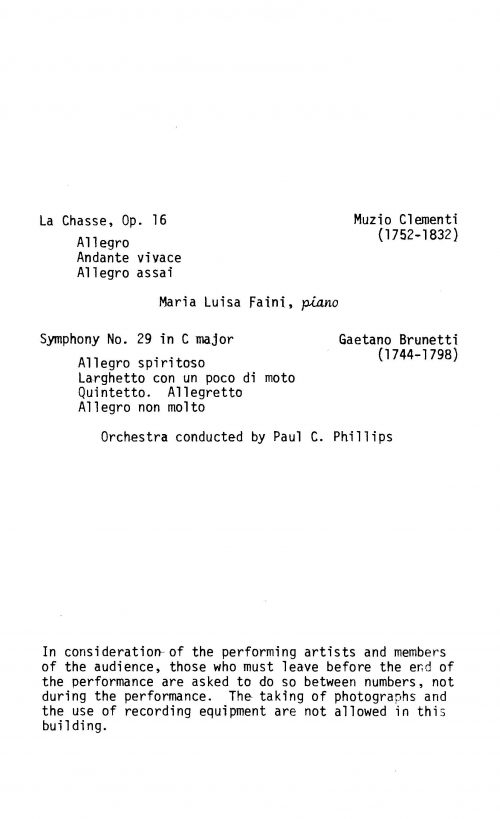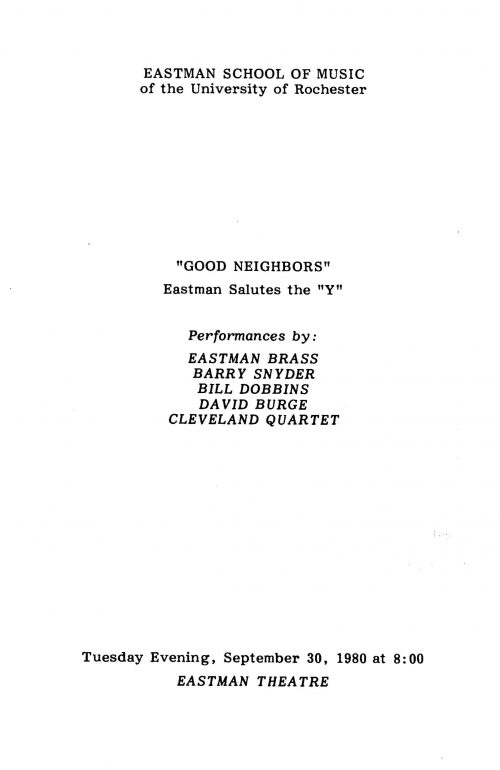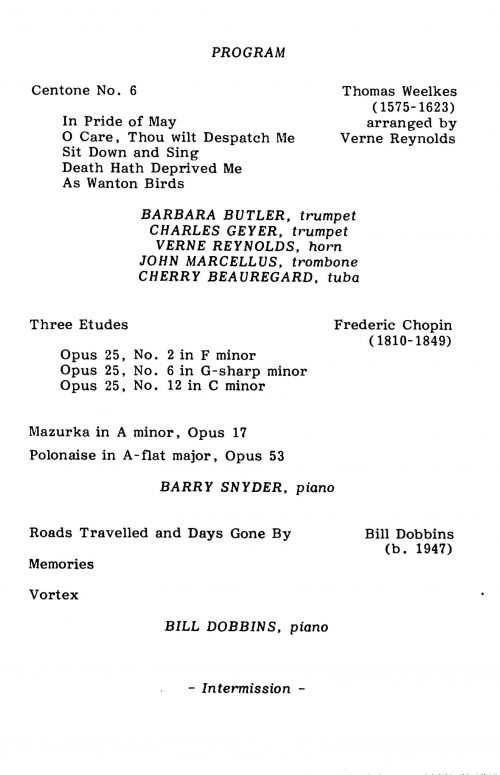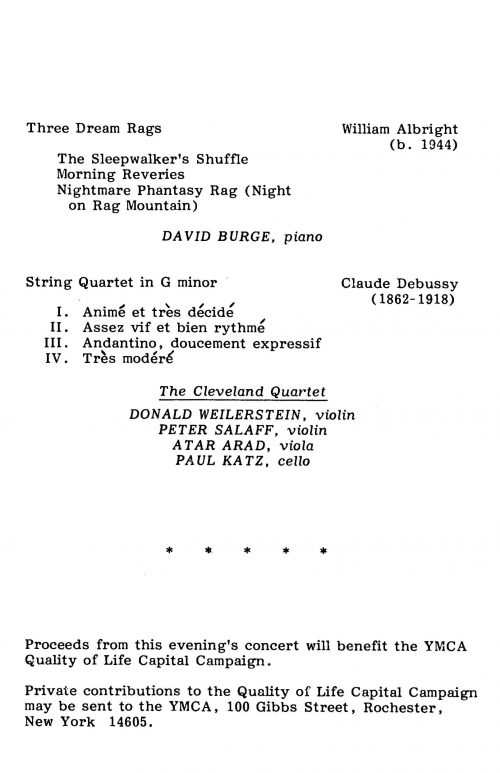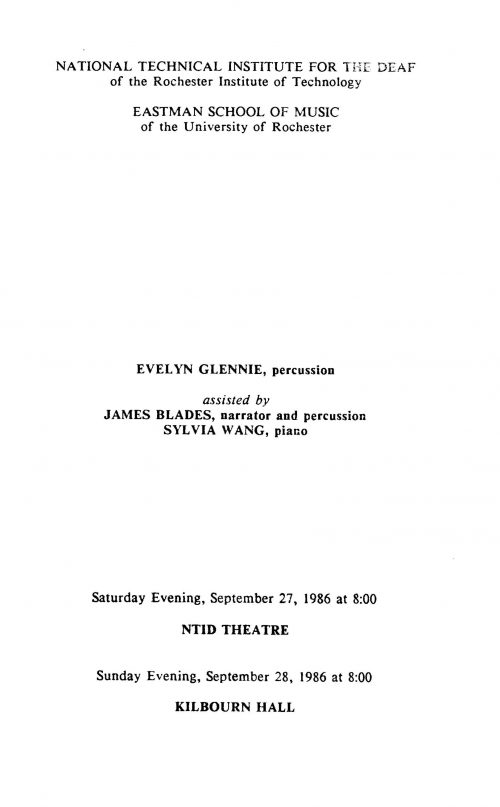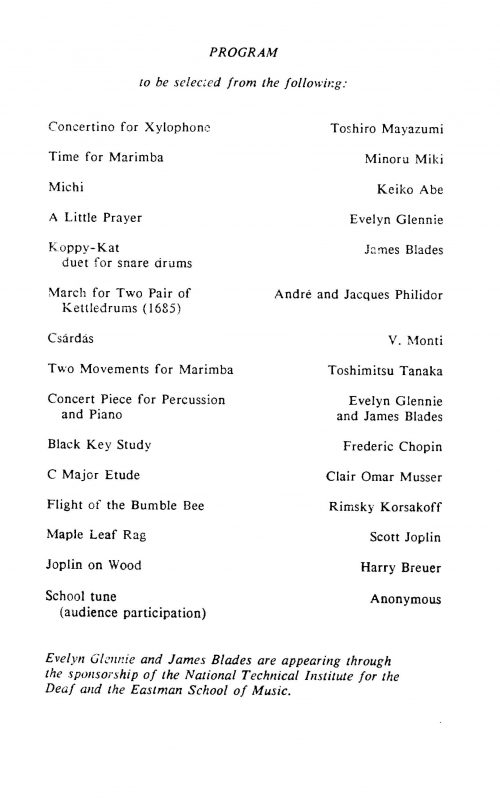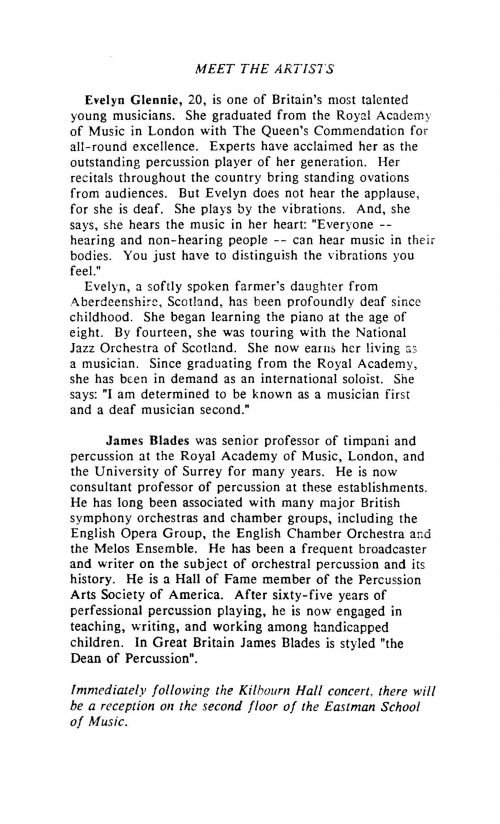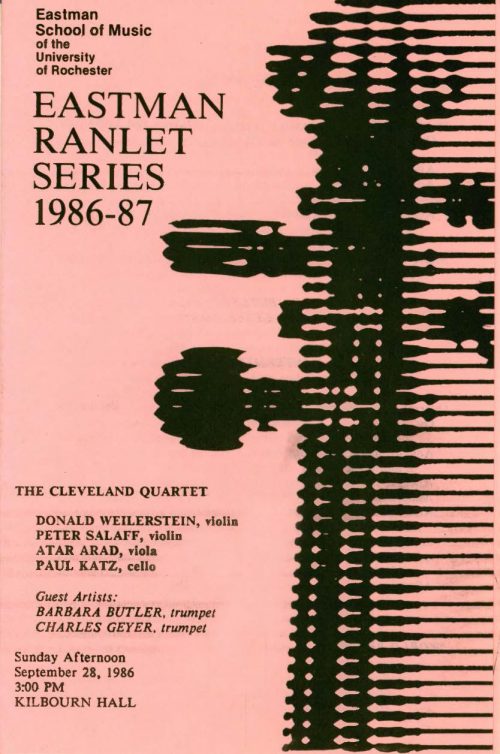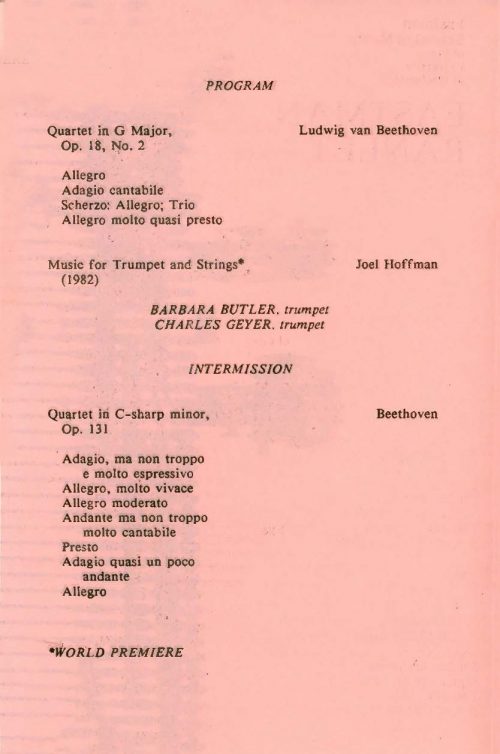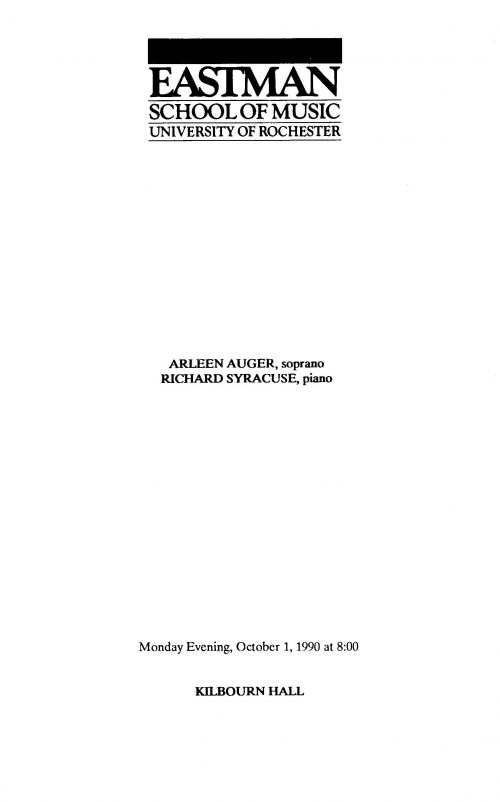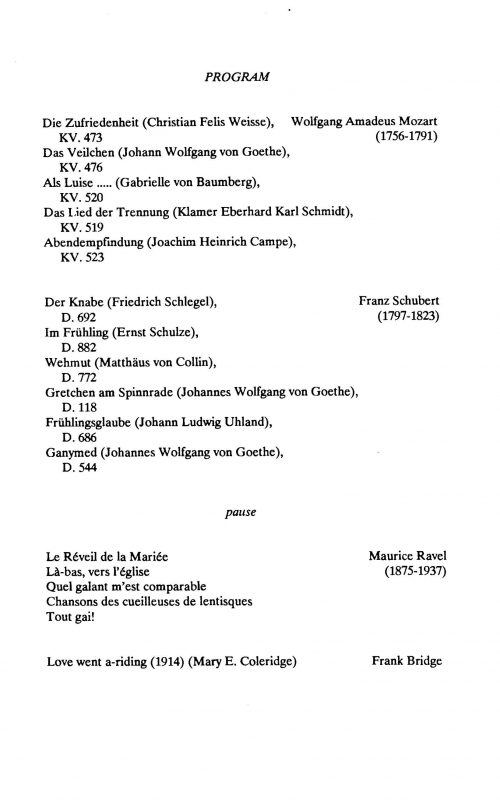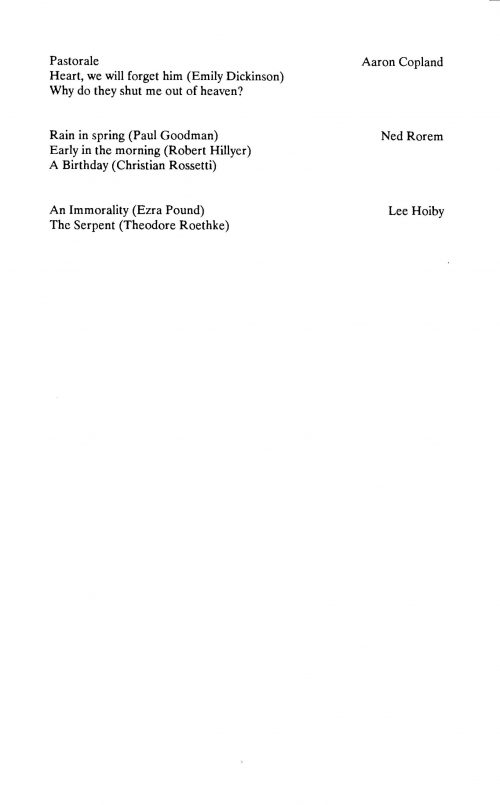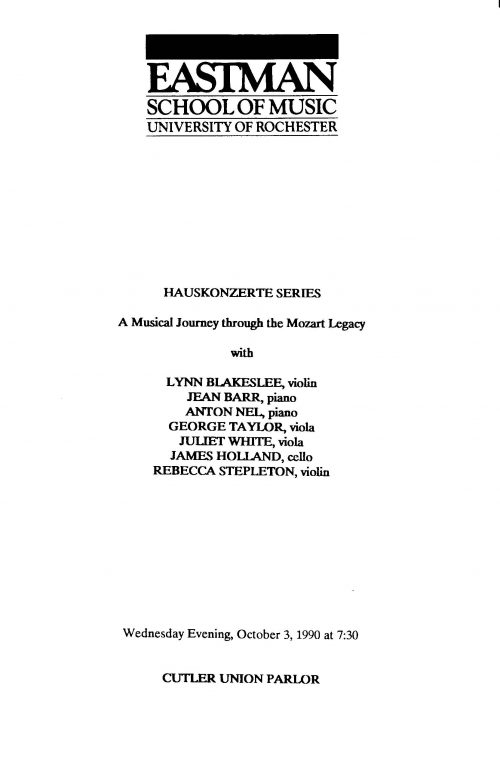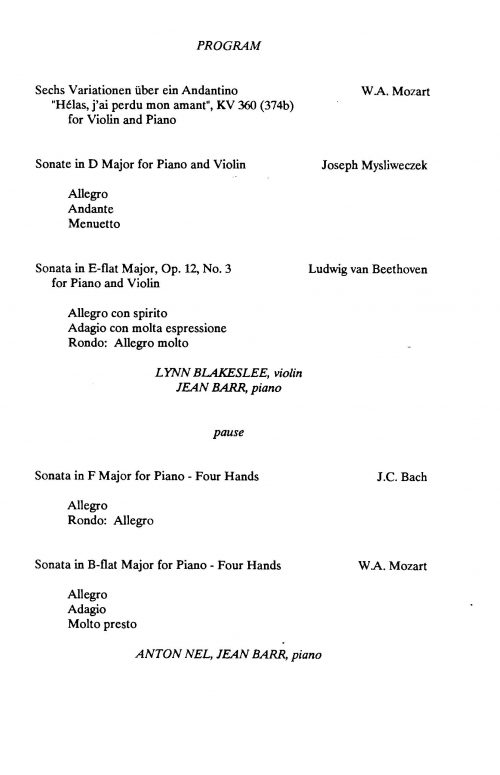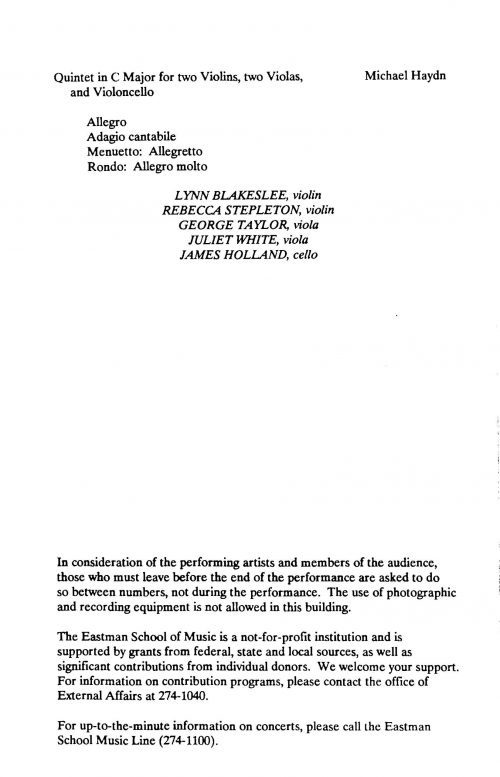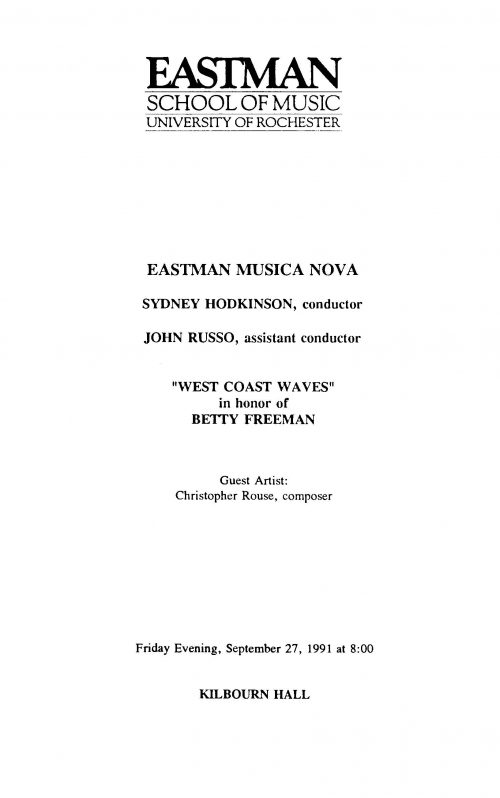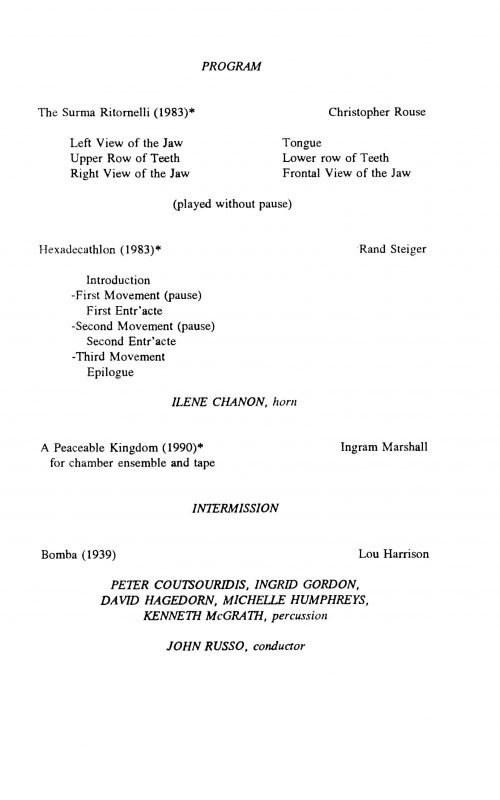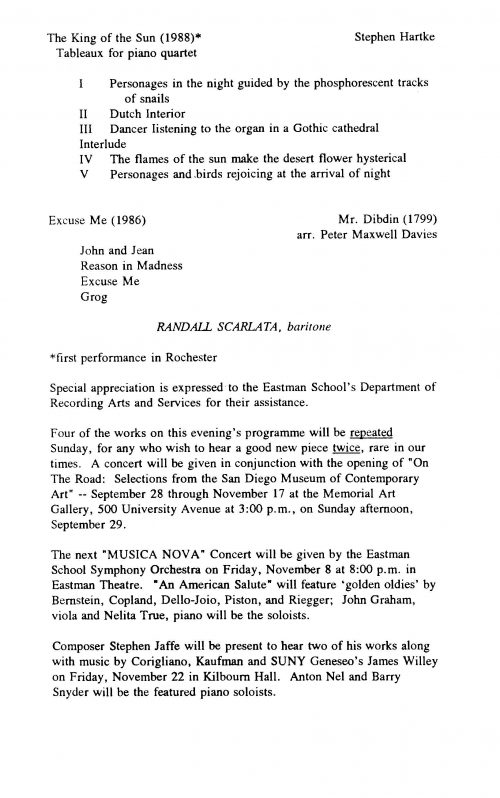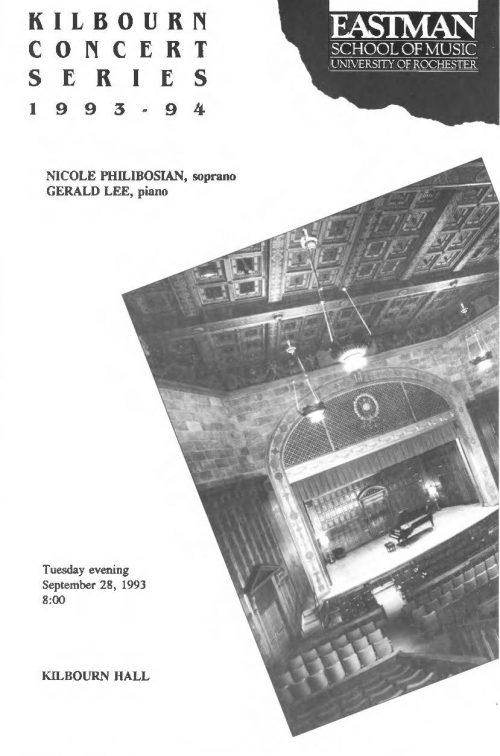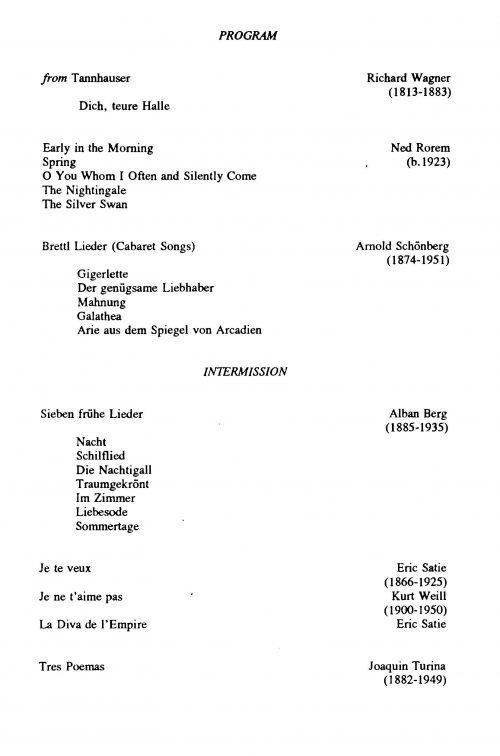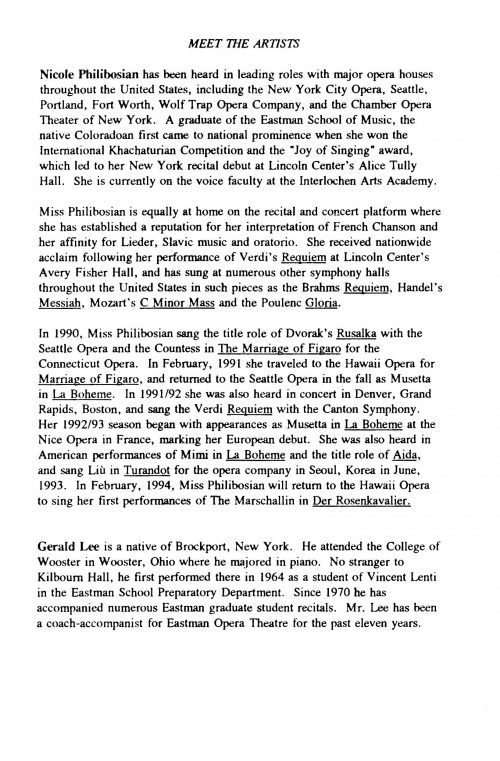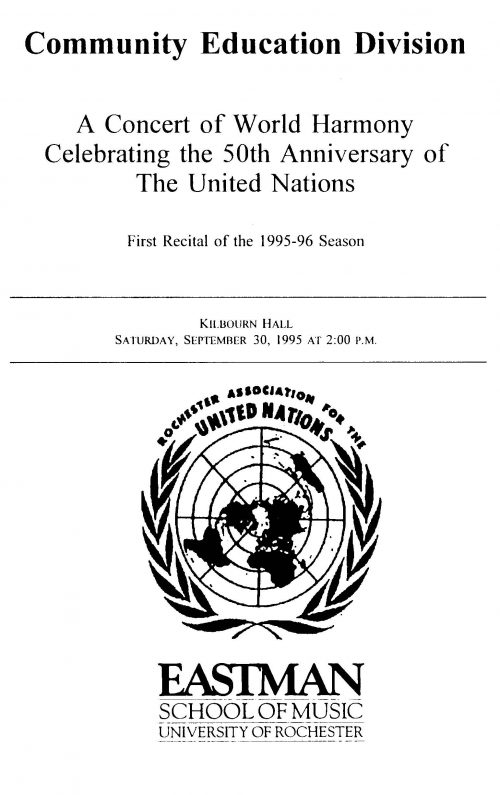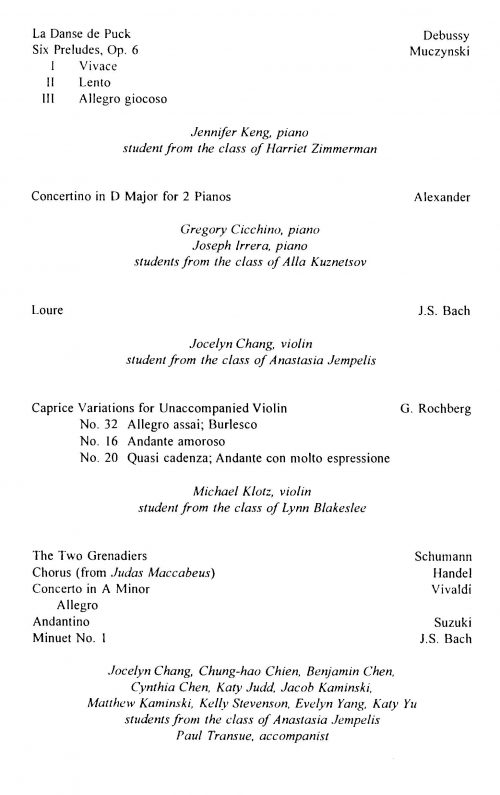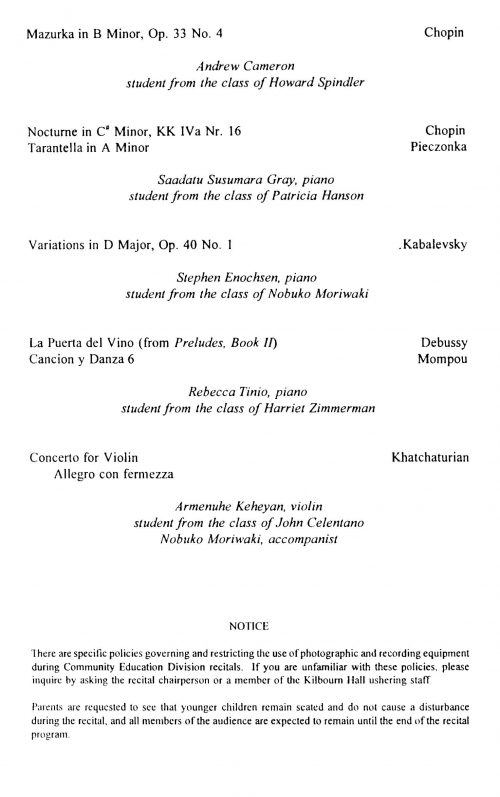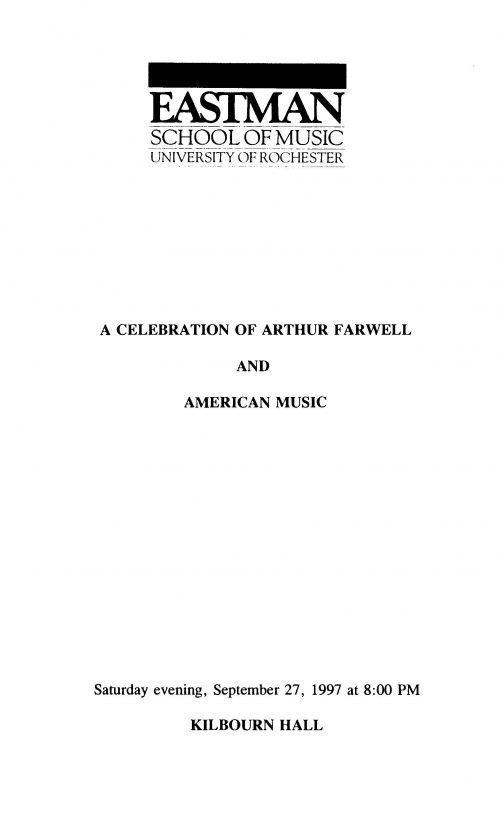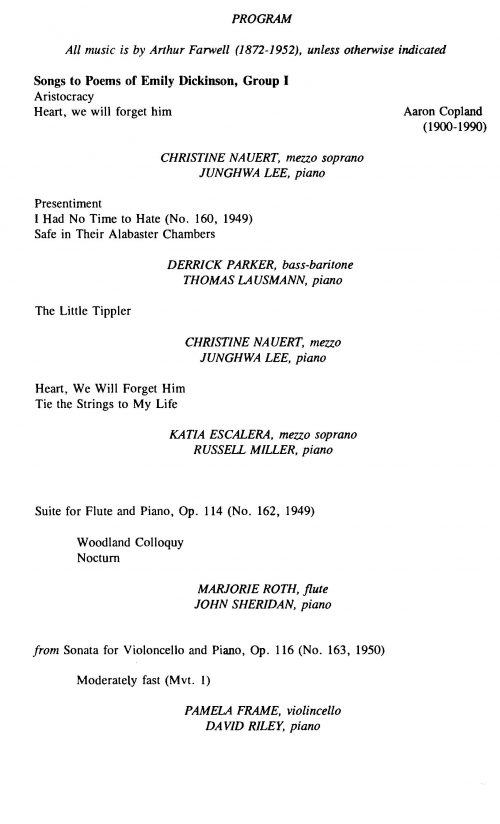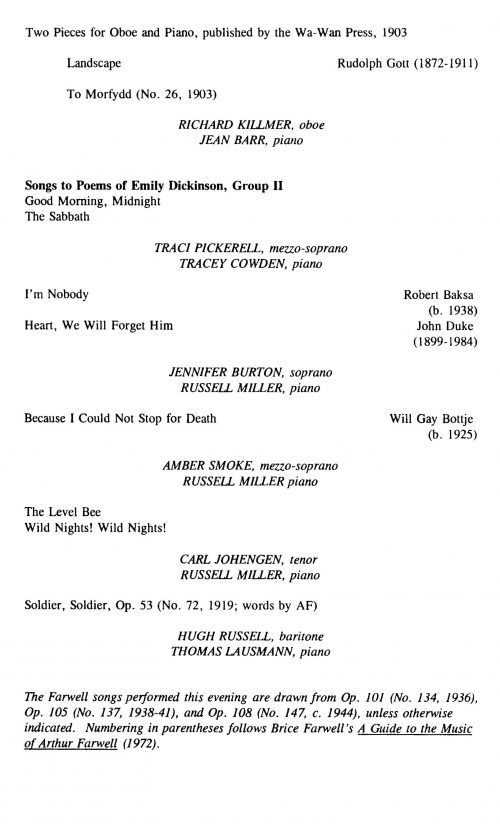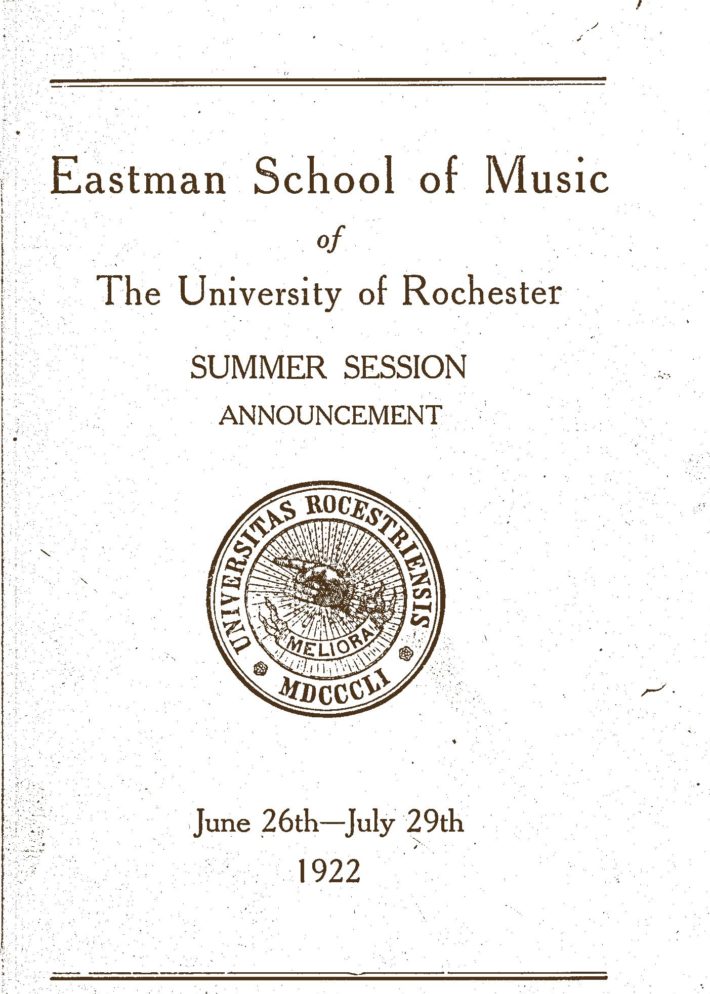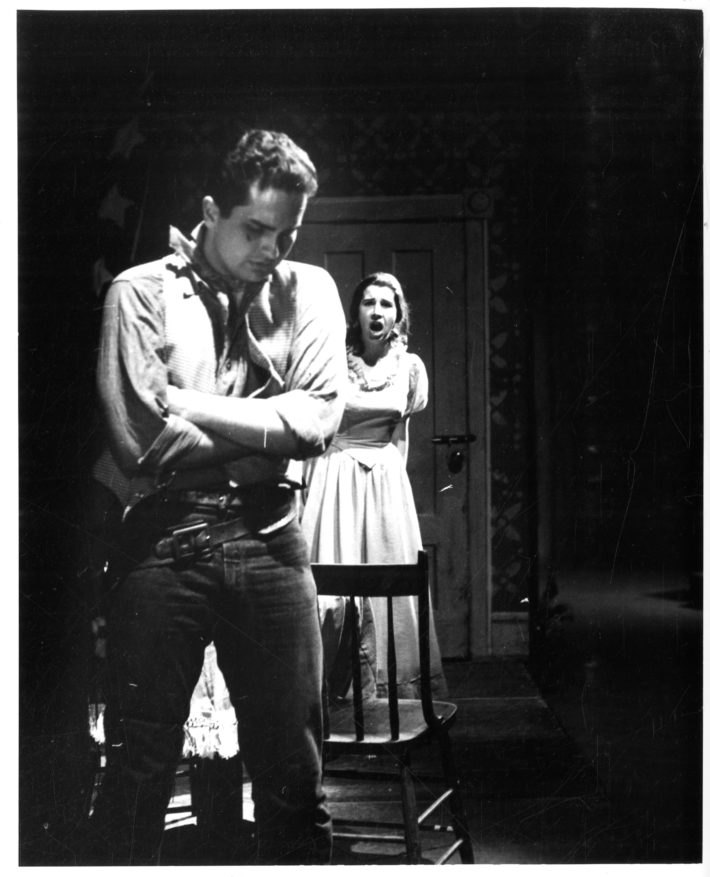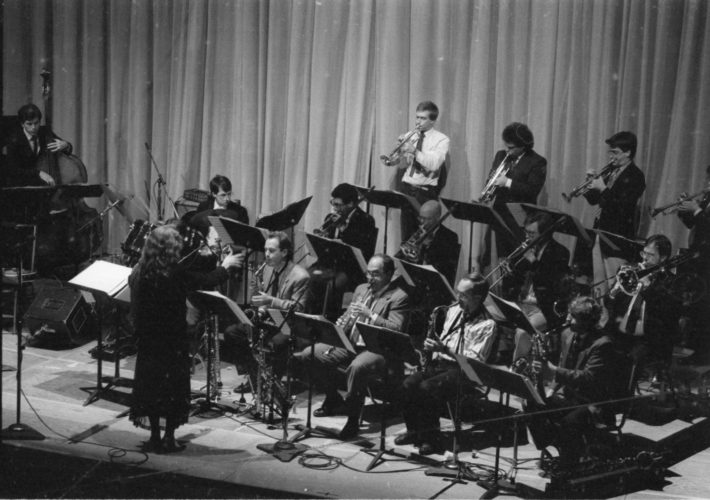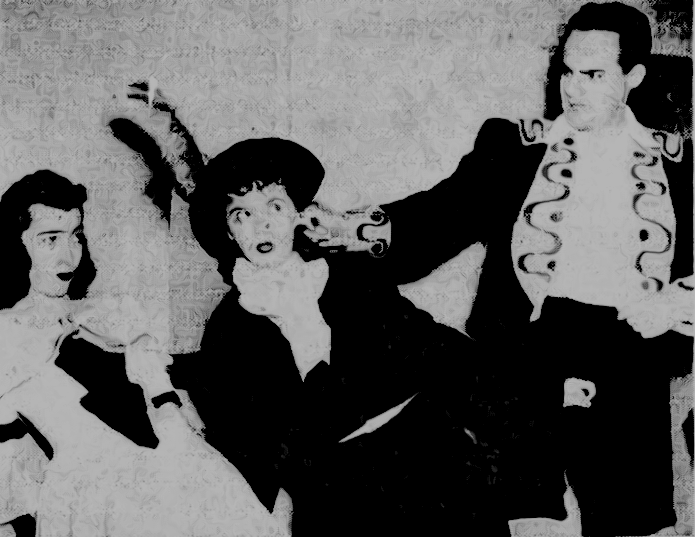September 27th-October 3rd: The Note Book and more
September 27, 20211921: The Eastman School’s earliest student newspaper
One hundred years ago this week, on September 27th, 1921, eight days after the Eastman School opened for instruction, an occasional issue of The Note Book was published and was circulated to students; today this issue constitutes the Eastman School’s oldest extant student newspaper. In the first two months of the 1921-22 school year, The Note Book was intended to be published occasionally (or, as the masthead indicated, “every once in a while”), but soon, with the issue of November 28th, 1921 (which was formally numbered volume I, number 1), the newspaper began a regular run that would last for four academic years (1921-25). Beginning with that issue, issues of The Note Book were generally a minimum of eight pages in length, frequently with a photograph appearing on the first page. The complete run of The Note Book has been digitized and may be accessed online. Owing to its relevance as a primary source with commentary on individuals and topical issues, The Note Book will be frequently cited in future entries of “This Week at Eastman”.
In this occasional issue of September 27th, 1921, the vignettes printed on the third and fourth pages beneath the heading “First Week’s Chronicle” are well worth reading. Readers should bear in mind that the school’s opening on September 19th, 1921 had been restricted to use of the third and fourth floors, all else still being under construction. For background and for context, here follows a list of names cited on those pages, together with role and years of service at the Eastman School:
Alexander, Mr. Arthur: teacher of voice; served 1921-22
Augieras, Mr. Pierre: teacher of piano; served 1921-25
Cooper, Mrs. Mabel Lewis: teacher of piano; served 1921-41
Klingenberg, Mr. Alf: Director, Eastman School of Music; served 1921-23
Penny, Mr. George Barlow: teacher of theory and composition; served 1921-34
See, Mr. Arthur: teacher of piano and also an administrator; served 1921-53
Sinding, Mr. Christian: teacher of composition; served 1921-22
Trotter, Dr. T. H. York: teacher of theory; served 1921-23
Truelove, Marjorie (later Mrs. MacKown): teacher of piano; served 1921-57
► Images of the newspaper’s four pages
1980: John Perry master class
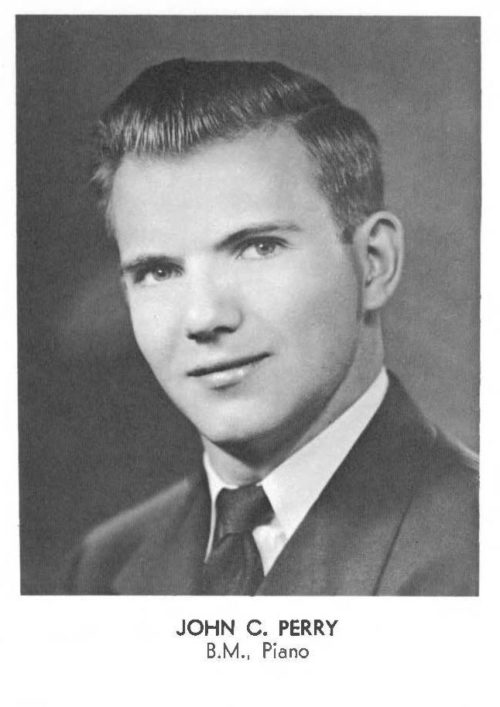 ►Image: 1956 SCORE yearbook photo of John C. Perry
►Image: 1956 SCORE yearbook photo of John C. Perry
In the time-honored tradition of Eastman School alumni returning to their alma mater, pianist John Perry, ’56,’58 returned to Rochester in the fall of 1980 to give a recital in the Kilbourn Concert Series. In advance of his recital, on September 28th, Mr. Perry gave a master class in Howard Hanson Hall, coaching several Eastman piano majors before an audience that included his own Eastman School mentor, Mrs. Cécile Genhart.
As a candidate for the Performer’s Certificate at Eastman, Mr. Perry had appeared as soloist with the Eastman-Rochester Symphony Orchestra, performing the Symphonic Variations by César Franck under Howard Hanson’s direction on March 22nd, 1957. After completing his graduate work he continued his studies in Europe, and went on to win numerous awards, including the highest prizes in both the Busoni and the Viotti international piano competitions in Italy; he also won special honors at the Marguerite Long International Competition in Paris. Besides enjoying a reputation as a performer, Mr. Perry has been much in demand as a teacher. He is a longtime faculty member of the University of Southern California, where today he is Professor Emeritus.
It may truly be said that three generations of Eastman pianists were gathered that day in Howard Hanson Hall. Mr. Perry’s Eastman teacher, Swiss-born Cécile Genhart (née Staub), served on the Eastman faculty from 1928 until her retirement in 1971; she returned to Eastman in 1973 at Director Freeman’s invitation, serving until her second retirement in 1982. She died in 1983.
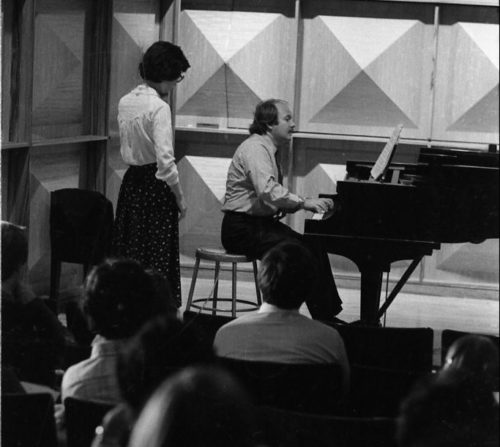
►Photos by Louis Ouzer. Master negative nos. R2889-13, 16, 18, 20, 21, 33, 36.
1976: Eastman New Jazz Ensemble in rehearsal
Forty-five years ago this week, in these photographs taken on September 29th, 1976, the members of the Eastman New Jazz Ensemble are seen rehearsing in Room 120 (today known as the Rayburn Wright Room). The ENJE would perform a joint concert with the EJE on October 8th, 1976 in the Eastman Theater (concert program displayed herewith). At this time the Eastman New Jazz Ensemble was still a new venture, having made its public debut in a joint concert with the Eastman Jazz Ensemble on October 17th, 1975.
►Images: Concert program, pages captured individually
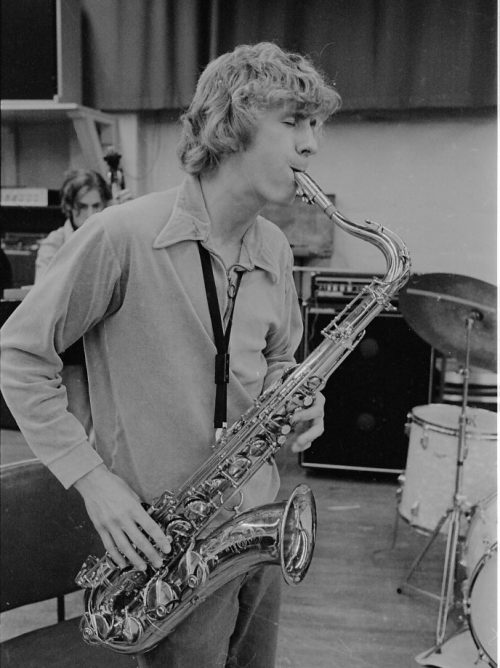
►Photos by Louis Ouzer. Master negative nos. R2233-5, 6, 14, 18, 19, 26; R2234-14, 22, 26, 32.
1980: Ron Carter master class
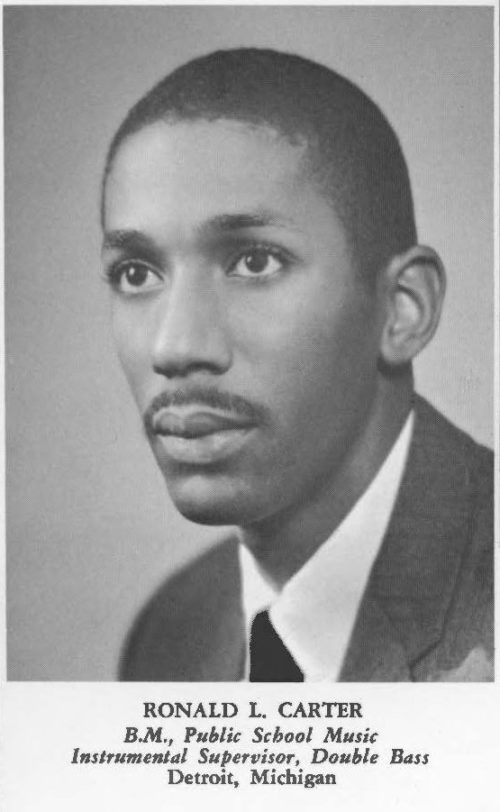 ►Image: 1959 SCORE yearbook photo of Ronald L. Carter
►Image: 1959 SCORE yearbook photo of Ronald L. Carter
Another celebrated alumnus who returned to Eastman in the fall of 1980 was Ron Carter, ’59, internationally renowned jazz double bassist, who gave a master class on September 30th, 1980 in Room 120 (today known as the Rayburn Wright Room). By 1980 Mr. Carter had gained an international reputation, having initially risen to prominence as a member of the second Miles Davis Quintet (1963-68) and then as a regular recording artist with CTI Records throughout the 1970s and 1980s, for which he not only recorded solo under his own name, but also recorded in collaboration with a diverse range of artists. All the while he was performing solo and was collaborating with every jazz artist of significance.
While enrolled at the Eastman School, Mr. Carter performed with the Rochester Philharmonic Orchestra in his senior year (1958-59). In that same year he was also a member of the newly-founded Eastman Philharmonia, and was a participant performer on the orchestra’s earliest out-of-town engagements in the winter of 1959. After completing his Eastman degree, Mr. Carter went on to earn a masters degree at the Manhattan School of Music.
Today Mr. Carter enjoys a reputation as the most recorded jazz bassist in history. He has won two Grammy Awards. He is Distinguished Professor Emeritus of the music department of City College of New York, where he has taught for more than twenty years. In 2008 he was appointed to the faculty of the Juilliard School, teaching bass in Juilliard’s Jazz Studies program. He has received an honorary doctorate from the Berklee College of Music. Mr. Carter’s philanthropic interests include his serving as a member of the Advisory Committee of the Board of Directors of the Jazz Foundation of America. One of the Jazz Foundation’s primary missions is to assist musicians in need through its Musicians’ Emergency Fund, providing housing assistance, pro bono medical care, disaster relief and direct financial support in times of crisis.
In recognition of his service to music, Mr. Carter was honored in 2010 with France’s highest cultural award: the medallion and title of Commander of the Ordre des Arts et des Lettres. He is now formally styled as Sir Ron Carter.
In recent years Mr. Carter has made a generous gift to the Sibley Music Library of an extensive collection of jazz recordings. The recordings are all individually catalogued and are accessible at Recordings/Reserves on the SML’s 3rd floor.
►Master class photos by Louis Ouzer. Master negative nos. R2890-3, 4, 10, 14, 15; R2891-2A, 3A, 6A, 8A, 13A.
1971: Eastman Philharmonia season opener at Strong Auditorium

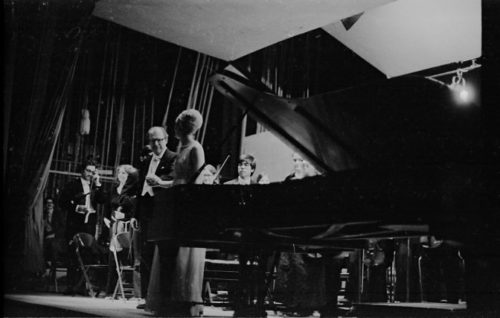
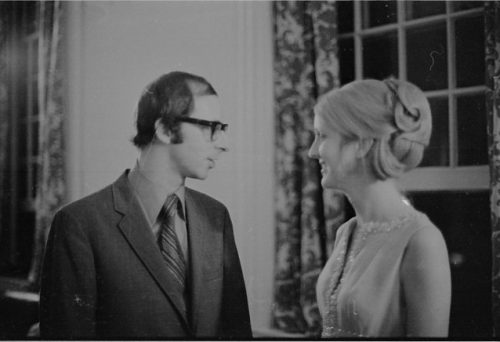
►Photos by Louis Ouzer. Master negative nos. R2233-5, 6, 14, 18, 19, 26; R2234-14, 22, 26, 32.
Fifty years ago this week, on October 1st, 1971, the Eastman Philharmonia performed the first concert of the 1971-72 academic year, a concert which bore a special significance in that it opened the school’s Fiftieth Anniversary Season, as 1971-72 was formally promoted. Because the Eastman Theater was undergoing extensive renovations just then, the concert took place in Strong Auditorium on the River Campus. (The ET would eventually re-open with a gala concert on January 7th, 1972, featuring the Eastman Philharmonia with faculty pianist Eugene List as soloist.) Pianist Katherine Collier, BM ’70 and a candidate for the MM degree, appeared as soloist in the Piano Concerto no. 2 in G minor, opus 16 by Sergei Prokofiev; Eastman School Director Walter Hendl was the conductor. Ms. Collier had studied with Cécile Genhart until the latter’s 1971 retirement, and had recently begun to study with Barry Snyder.
Today Ms. Collier is Professor of Piano at the University of Michigan. Her performance credits include concert engagements around the world as soloist, chamber musician, and collaborative pianist.
It should be noted that Ms. Collier’s teacher, Mr. Snyder, had also performed the Prokofiev opus 16 while a graduate student at Eastman, appearing with the Eastman-Rochester Symphony Orchestra under Mr. Hendl’s direction on March 16th, 1967.
In earlier decades (before our own time, that is), it was the custom for staff writers at both of Rochester’s daily newspapers to review Eastman School ensemble performances. Following the Philharmonia’s concert at Strong Auditorium, Theodore Price, writing for the Democrat & Chronicle, and George H. Kimball, writing for the Times-Union, both took note of the concert’s significance in that it opened the Eastman School’s 50th Anniversary Season. (Copies of both reviews are preserved in the Rochester Scrapbooks in the Sibley Music Library’s vault.) Mr. Kimball went so far as to find fault with the orchestra in both the Beethoven and the Franck, specifically “. . .the first violins particularly finding the top of the range elusive of pitch in the rapid passages.” Did Mr. Kimball mean intonation problems? Never mind, for he closed his review with an expression of confidence that the orchestra would have time to recover before its next performance. As well he might have, for Mr. Kimball must surely have been aware that by 1971 the Eastman Philharmonia had performed in Washington, D.C. (1961) and at Carnegie Hall (1962) and at the New York World’s Fair (1964), and had undertaken a State Department-sponsored tour of Europe and the Middle East (1961-62), whence the orchestra members had been hailed as Musical Ambassadors. No ordinary student orchestra, this Eastman Philharmonia.
The Weekly Dozen
►October 2, 1973 Malcolm Bilson, fortepiano
►September 28, 1978 Sibley Music: 18th-Century Italy
►September 30, 1980 Good Neighbors: Eastman Salutes the Y
►September 27, 1986 Evelyn Glennie, percussion
►September 28, 1986 The Cleveland Quartet
►October 1, 1990 Arleen Auger, soprano with Richard Syracuse, pianist
►October 3, 1990 Mozart Hauskonzerte Series
►September 27, 1991 Musica Nova: West Coast Waves
►September 28, 1993 Nicole Philibosian, soprano with Gerald Lee, piano
►September 30, 1995 United Nations 50th anniversary concert
►September 27, 1997 A Celebration of Arthur Farwell and American Music

